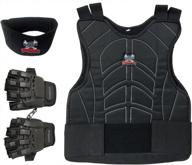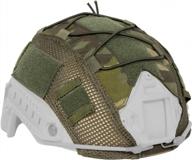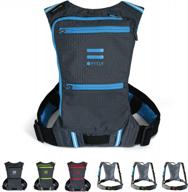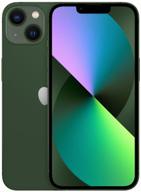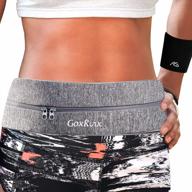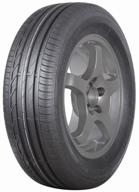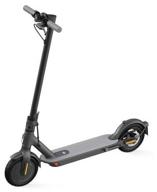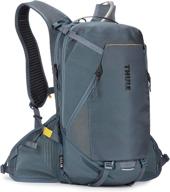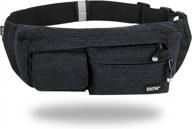Another interesting products
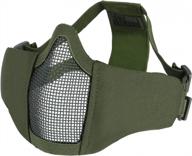

23 Review

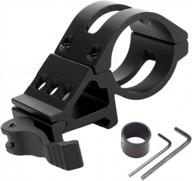

24 Review

How to carry my phone securely while running?
Having your phone with you when you go for a run can be very useful for listening to music, tracking your route, or staying connected in case of emergency. However, carrying a phone while running also presents some challenges, especially around keeping it secure. Here are some tips for carrying your phone safely and securely during a run:
Use a running belt or armband
A running belt or armband designed specifically for holding phones is one of the most secure options. These hold the phone close to your body and often have additional features like:
- Zippered pocket to prevent the phone from falling out
- Adjustable velcro straps for a snug fit
- Moisture-wicking materials to prevent sweat damage
- Clear window for touchscreen access
Position the phone correctly
Pay attention to phone placement when using a holder or belt:
- Place it snugly in the middle of your back if using a belt
- Slide it up your arm so it sits above your wrist if using an armband
- Turn the screen inwards towards your body for added protection
Use a secure phone case
If you prefer not to wear a belt or armband, at minimum use a very grippy phone case to reduce the risk of drops. Case features to look for include:
- Textured materials like silicone
- Raised edges to protect the screen
- Lanyard or finger loop
- Water and sweat resistance
With the right gear and some adjustments to how you carry your phone, you can feel confident bringing it along on any run without worry.
How to keep essentials handy during a run?
When going for a run, it's important to have essential items like keys, cash, and IDs close at hand. Here are some tips to keep must-have gear accessible on the go:
Use running belts or vests
Running belts and vests allow you to carry small items during your run. Features to look for include:
- Zippered pockets secured close to body
- Snug fit to minimize bouncing
- Moisture-wicking fabric
- Reflective detailing for visibility
Strategize pocket placement
If wearing shorts or pants with pockets, be strategic about what goes where:
- Back zip pocket for keys, cash, credit card
- Side pocket for ID or transit pass
- Front pouch for gels or chews
Use armbands or wrist straps
Armbands that wrap around your arm or wrist straps are great for carrying keys, ID, or cash when pockets aren't an option. Look for:
- Snug fit
- Moisture wicking material
- Reflective accents for visibility
- Zippered pouch or secure closure
Consider a small running backpack
For longer runs where you need to carry more gear, a lightweight running backpack allows you to keep essentials handy and organized.
With the right accessories and strategic planning, you can keep must-have items close during any run.
Top products in 🏃♂️ Running
How to prevent chafing from my running belt?
Chafing from your running belt rubbing against your skin can make for an uncomfortable run. Here are some tips to prevent irritation and rubbing from your belt:
Choose the right belt material
Look for belts made of soft, smooth materials like:
- Spandex or stretchy nylon - molds to your body
- Silicone - extremely smooth surface
- Bamboo fabric - naturally soft and antibacterial
Avoid belts with seams or rigid stitches that can dig into skin.
Ensure a proper fit
A belt that fits too loose or too tight can lead to chafing. Follow these fitting tips:
- Position belt flat around hips or waist
- Strap should feel snug but not constricting
- No gaping, pinching or bulging around belt
- Should not shift dramatically up or down during run
Lubricate problem areas
Apply lubricant to inner thighs, underarms, etc to minimize friction between body and belt such as:
- Anti-chafe balms and creams
- Petroleum jelly
- Body glide sticks
Wear proper undergarments
Seamless, snug-fitting undergarments can create a friction barrier. Avoid underwear with thick seams.
Rinse belt after each use
Rinsing sweat and bacteria off the belt helps prevent skin irritation and infection.
With some adjustments and proper care, your running belt can be comfortable and chafe-free.
How to get the perfect fit from my running belt?
Getting the right fit is crucial for comfort and performance when using a running belt. Here are some tips for achieving the perfect fit:
Position the belt correctly
For most belts, optimal placement is:
- Wrapped snugly around your waist or hips
- Centered over your lower back for stability
- Situated above the hips bones for support
Adjust the straps
Use the adjustable straps for a secure, customized fit:
- Start loose and tighten evenly on both sides
- Straps should feel snug but not dig into skin
- Only 1-2 fingers should fit between strap and body
Test stability
Check belt stability by:
- Jogging on the spot for 30 seconds
- Throwing in some side-to-side movement
- Belt should stay centered and not ride up or down
Load it up
Put your essentials like phone, keys, fuel, etc. into the belt pockets or pouches.
- Belt should still feel secure and not shift around
- Readjust straps as needed if it feels loose
Try it on a run
The real test is taking it for a run. Notice if the belt:
- Rubs or chafes your skin
- Bounces or shifts excessively
- Feels comfortable for the duration
Tweak the positioning and tightness until you find your perfect fit!
How to wash and care for my running belt?
Properly washing and caring for your running belt helps extend its lifespan. Follow these tips:
Read the care instructions
Check the belt's tag or manual for the manufacturer's cleaning recommendations such as:
- Hand wash or machine wash
- Cold water wash
- Tumble dry low or line dry
- Any warnings about bleach, ironing, dry cleaning
Rinse after every run
Rinse the belt with clean water after each use to remove sweat and dirt. This prevents odors and material degradation.
Wash regularly
Every few weeks, give the belt a thorough cleaning by:
- Hand washing with mild detergent and cool water
- Letting it air dry completely to prevent mold
Spot treat stains
Use a stain remover like OxiClean spray to pretreat any visible stains prior to washing.
Avoid harsh chemicals
Don't use bleach, fabric softener, or aggressive detergents which may degrade the fabric over time.
Store properly
Keep your belt in a cool, dry place out of direct sunlight when not in use.
Inspect regularly
Check for signs of damage like fraying straps, cracking zippers, or peeling material and repair or replace as needed.
With proper care and washing, your running belt can stay in great shape run after run.
How to choose the right running belt for my needs?
With different types of running belts available, it's important to consider your specific needs to choose the right option. Here are some tips:
Determine how you'll use it
Think about when, where, and how you plan to use the belt:
- Short or long runs?
- Training or racing events?
- Just for holding your phone or other essentials too?
Consider belt placement
Belts come designed for wearing around your waist or hips. Choose based on:
- Waist belt for stability during intense training
- Hip belt for comfort during long endurance runs
Evaluate storage needs
Those with bigger phones or more gear to carry may need:
- Larger storage capacity
- Expansion pockets
- Hydration bottle holders
Assess moisture control
Belts made with moisture-wicking fabric help keep you dryer by:
- Evaporating sweat off material quickly
- Preventing sweat absorption and odor
Consider adjustable straps
Belts with adjustable straps allow you to customize the fit as your body and needs change.
Read reviews
Check reviews from other runners to learn about real-world comfort, durability, pros and cons before purchasing.
Choosing a belt suited for your specific running needs will ensure you get the best performance and value.
Similar products
How to get an Amazon Prime subscription for a profit in Running Belt For Women And Men - Waist Pack Phone Holder With Sports Wristband, Fanny Pack Money Pouch Fit All Phones For Running, Hiking, Traveling & Cycling
Amazon Prime offers fast, free shipping and other benefits for online shoppers. Here are some creative ways to get a Prime subscription while actually making money with your running belt purchase:
Use a cashback site
Cashback sites like Rakuten give you money back for purchases made through their links. Follow these steps:
- Join Rakuten for free.
- Find the deal for Amazon Prime and activate it.
- Click through to Amazon using Rakuten's link.
- Sign up for Prime.
- Rakuten will credit you $40 cashback on your $139 Prime subscription.
Take surveys
Survey sites like Swagbucks let you earn points and cash for completing surveys. You can redeem those earnings for an Amazon gift card to pay for Prime. Here's how:
- Sign up for Swagbucks and take surveys.
- Earn until you have enough points for a $139 Amazon gift card.
- Redeem points for the gift card.
- Use gift card to pay for your Prime membership.
Sell unused gift cards
Turn unwanted gift cards into cash you can use towards Prime. Options include:
- Reselling on sites like CardCash
- Exchanging for an Amazon e-gift card on Cardpool
- Trading in for Amazon credit on GiftCardGranny
Promote new Prime subscriptions
For every new paid Prime signup using your personal referral link, you can earn up to $12 in Amazon credit. Just share your link and get friends and family to sign up.
With the right strategies, you can get an Amazon Prime membership that enhances your running belt shopping experience for free or even at a profit.
How To Choose The Right Size Running Belt For Your Body Type?
Choosing the right size running belt is crucial for a comfortable and secure fit. Here are some tips to help you choose the right size:
What Are The Different Types Of Running Belts Available In The Market?
Here are the different types of running belts available in the market:
What Are The Pros And Cons Of Tube-Style Running Belts?
Pros:
Cons:





